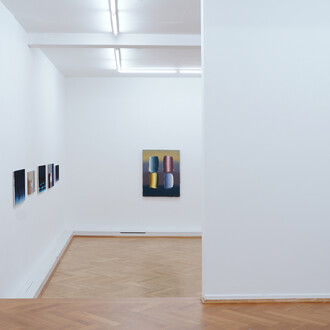Images of reality are everyday. Cameras are omnipresent, at least in the smartphone, and every moment can be fixed. Photography is not an exclusive good, as it was a hundred years ago, when a photograph was a rarity; And the times when painting was needed for illustration have almost fallen into oblivion. Yet in recent decades, the trend towards a realistic depiction of reality has increasingly returned to the visual arts. Anyone can photograph today, but who has been dedicating himself to the portrait of a person for weeks, to paint it with a paintbrush and paint down to the smallest detail? This is a contrast to the fast-paced smartphone photos, which are erased as quickly as they were created. In hyperrealism, one recognizes genuine surrender to the moment, to a work that takes time to emerge, and precisely thereby receives value and justification.
Clio Newton, originally from New York, works in Zurich on her survival-size depictions of women. Their charcoals are black-and-white, the gradients soft as a filter over a photo. The artist paints women she meets everyday, people she does not know, and with whom she is busy for weeks. An exception, considering how quickly most of the random traces disappear without leaving traces. At Newton the tracks are visible, their work shows women with unknown backgrounds and stories, which are connected only by their amalgamation with the artist. And yet for Newton, people have more similarities than differences, a conviction that one sees in their work - by the same form of representation, the same medium, the similar composition of the works.
Much stronger than in a photo, a painter reproduces his own, interpreted reality of a person, a figure that is always subjectively influenced. What is shown to the viewer, what remains hidden? And is this done intentionally or subconsciously? Who knows more, artist or viewer?
In his works, Eloy Morales interprets not only others, but also himself. The intense view, which the artist is captivating in detail on canvas, penetrates through color layers from white to earthy red to strong blue. While the portraits are as realistic as a photograph, Morales uses the faces as a canvas and abstracts his interpretation of the portrait. He hides his face under what he wants to show the viewer, perhaps hides himself, only this look, rigid and direct, lets the person guess behind the color. How differently Morales perceives his models and himself is shown by the variety of color-smeared faces: some are only covered with a transparent, even glaze, others with spontaneous, viscid color layers. Only the eyes look seriously and directly at the viewer, a window to that interior, which neither the artist nor the viewer know. If the artist is also a viewer and model - what can he still hide?
Text by Marina Sprenger
















